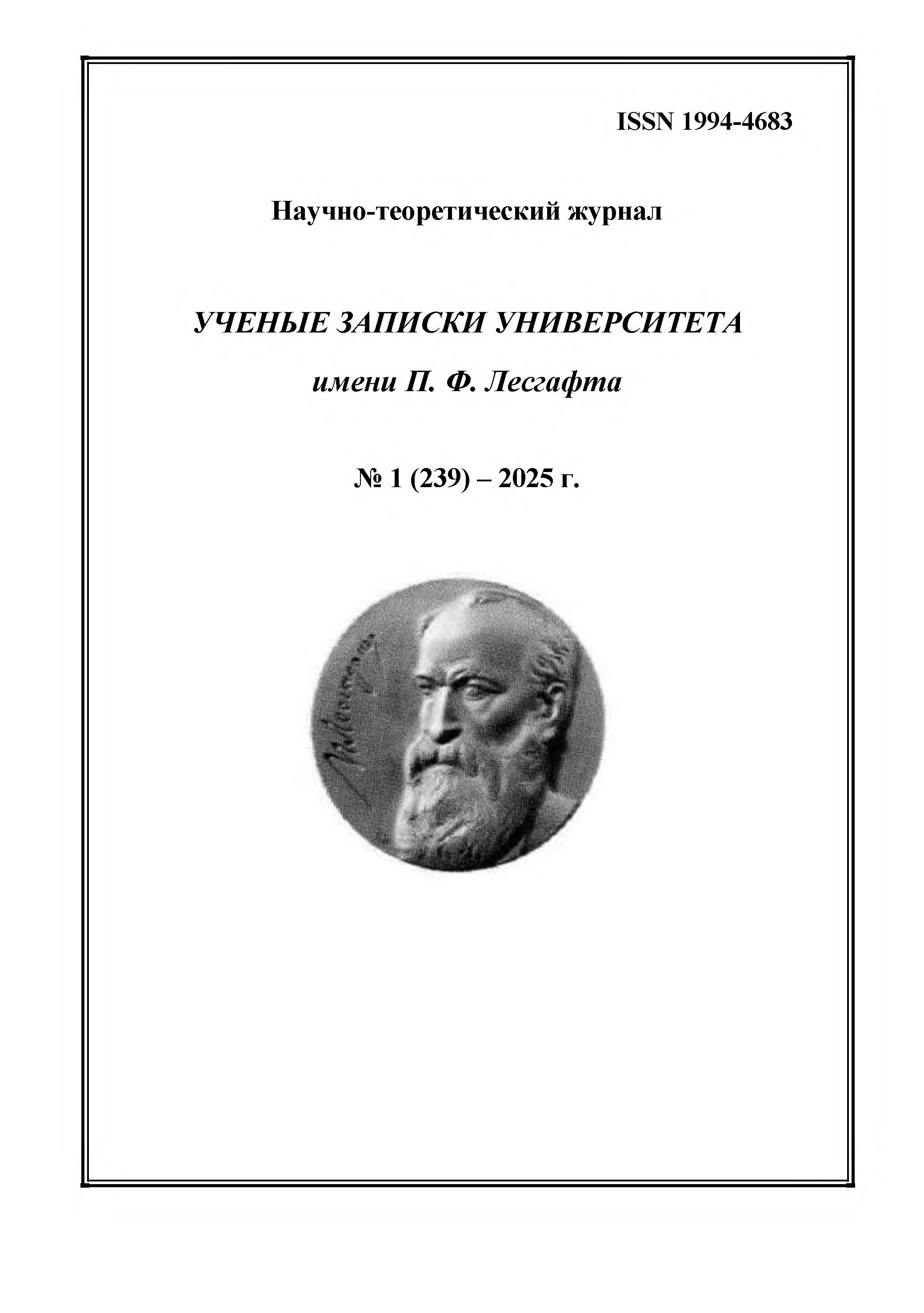St. Petersburg, Russian Federation
employee from 01.01.2022 until now
Saint-Peterburg, St. Petersburg, Russian Federation
employee from 01.01.2020 until now
Omsk Armored Engineering Institute (Department of Physical Training, professor)
employee from 01.01.2022 until now
Omsk, Omsk, Russian Federation
CSCSTI 77.29
The purpose of the study is to identify the peculiarities of organizing the training process for kickboxers at various stages of preparation from the perspective of the integration of cognitive processes and the intellectualization of motor activity. Research methods and organization. The study utilized surveys and interviews with 32 coaches working with various age groups of athletes. The questionnaire included sections on planning and periodization, training session content, load monitoring, integration of cognitive methods, and assessment of their effectiveness. The data were processed using integral indices. Research results and conclusions. It has been established that coaches prioritize planning and periodization. At the same time, low indicators have been identified in issues related to monitoring loads, integrating cognitive training, and evaluating the effectiveness of training approaches and means. The practice of situational training is applied sporadically, and organizational conditions are assessed by coaches as limited. It has been found that the modern training system for kickboxers is characterized by a contradiction between the traditional approach, which focuses on physical and technical training, and the increasing demands of competitive activity, which require a high level of cognitive readiness from the athlete.
kickboxing, motor training, cognitive processes, intellectualization, coaches, load monitoring, situational learning
1. Ponkratov A. V. (2020), “Integration of information and cognitive technologies in the training process of highly qualified martial artists based on the triads of training objects of highly qualified martial artists”, Scientific Notes of the P.F. Lesgaft University, No. 7 (185), pp. 313–317, DOIhttps://doi.org/10.34835/issn.2308-1961.2020.7.p313-317.
2. Kurmangaliyeva N. K., Nazarova V. V. (2016), “Application of information technologies in the implementation of sociological research methods”, Science and education of Greater Altai, No. 2. pp. 109–117.
3. Belyakov M. Yu., Maltsev V. P. (2022), “Structural-functional and neurophysiological aspects of ensuring the sports activities of kickboxers (review)”, Journal of Medical and Biological Research, Vol. 10. No. 4. P. 395–404, DOIhttps://doi.org/10.37482/2687-1491-Z122.
4. Kozin V. V., Salugin F. V. (2017), “Improvement of situational technique in the individual training of athletes in game sports and martial arts”, Modern Problems of Science and Education, No 3, URL: https://science-education.ru/ru/article/view?id=26485 (accessed 12.08.2025).
5. Salugin F. V., Kozin V. V. (2018), “Model of increasing the variability of tactical and technical actions of athletes taking into account the operational space”, Theory and Practice of Physical Culture, No. 12, p. 22.
6. Kwon G. M., Wax V. B. (2018), “Using the Likert scale in the study of motivational factors of students”, Scientific and methodological electronic journal “Concept”, No. 11. pp. 1039–1051, DOIhttps://doi.org/10.24411/2304-120X-2018-11086.
7. Joshi A., Kale S., Chandel S., Pal D. K. (2015), “Likert scale: Explored and explained”, British Journal of Applied Science & Technology, Vol. 7, No. 4, pp. 396–403, DOIhttps://doi.org/10.9734/BJAST/2015/14975.
8. Martin A. A., Litmanovich A. V. (2018), “Situational approach to tactical training in martial arts on the example of judo”, Problems of Improving Physical Culture, Sport and Olympism, No. 1, pp. 71–75.
9. Savinskiy P. S., Kozin V. V., Salugin F. V. (2022), “Content of modeling and visualization of tactical and technical activity in sports games and martial arts”, Modern Issues of Biomedicine, Vol. 6, No. 2 (19), DOIhttps://doi.org/10.51871/2588-0500_2022_06_02_40.
10. Slimani M., Miarka B., Briki W., Cheour F. (2016), “Comparison of mental toughness and power test performances in high-level kickboxers by competitive success”, Asian Journal of Sports Medicine, Vol. 7, No. 2, e30840, DOIhttps://doi.org/10.5812/asjsm.30840.
11. Ouergui I., Hssin N., Franchini E., Gmada N., Bouhlel E. (2014), “Technical and tactical analysis of high-level kickboxing matches”, International Journal of Performance Analysis in Sport, Vol. 14, No. 2, pp. 524–534, DOIhttps://doi.org/10.1080/24748668.2013.11868649.









